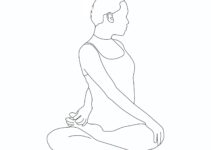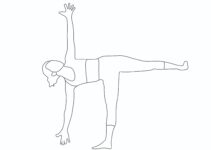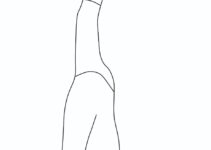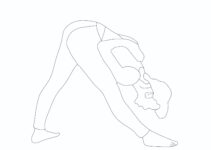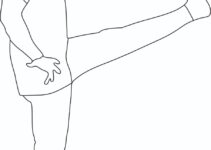What is the meaning of Vyaghrasana?
- This asana is so-called because it emulates the stretching movement practised by a tiger.
- A tiger and many other animals stretch their limbs like the movements of the asana, especially after awakening from a deep sleep.
- Vyaghrasana, Vyaghra means ‘tiger’, is an excellent yoga pose for exercising the digestive, eliminative and reproductive organs and the entire spine from top to bottom.
- We will discuss in detail Tiger Pose Yoga (Vyaghrasana’s) modifications, variations, the easy steps of doing it, precautions and contraindications.

Vyaghrasana
How do you do Tiger Pose Yoga (Vyaghrasana)?
The easy steps for practising tiger yoga are given below.
- Kneel on the floor, feet and knees slightly separated.
- Lean forward and place both hands flat on the floor, palms downwards.
- Adjust the position of the hands so they are slightly apart, and when your trunk is parallel with the ground, the arms and thighs are vertical.
- The hands should be directly below the shoulders.
- Relax your whole body.
- Slowly bend the right leg and swing the thigh to the chest.
- Simultaneously arch your back upwards and bend your head towards the upcoming knee while breathing out.
- The right foot should not touch the floor.
- At the end of this movement, try to bring your chin or nose in contact with the right knee while pressing the right thigh against the chest.
- Hold your breath.
- Try to bring the back of the head as near as possible to the right toes. Hold your breath and straighten your right leg so it points backwards again.
- This is 1 round. Do a few more games.
- Then perform the same actions with the left leg, keeping the right leg fixed on the ground.
Breathing
- Exhale while bringing the knee and thigh towards the chest.
- Hold your breath while pressing the thigh to the chest and the knee to the chin or nose. Inhale while swinging the knee backwards and stretching the leg.
- Hold your breath and simultaneously bend the leg so that the foot points to the back of the head.
Time of practice
This asana can be done at almost any time of the day except after meals and at any stage during your asana program.
Benefits of Tiger Pose Yoga
- It helps stretch the muscles and stimulate blood circulation.
- Vyaghrasana flexes and loosens the entire spine by bending it alternately backwards and forwards, thus toning the associated spinal nerves.
- It massages the lower organs of the body concerned with digestion, elimination and reproduction.
- It loosens the legs and prepares the body for normal functioning, especially after sleep.
- Women who suffer from sexual ailments like leucorrhoea should do this asana regularly. It is beneficial, especially when supplemented by other asanas, in rectifying this problem.
- Women who have just completed childbirth should also do this asana to bring about normality and firmness in the relevant areas.
- Sufferers of sciatica have obtained some relief from the asana, but it should be performed in the presence of a yoga expert.
Variations and Modifications
- some practitioners experience difficulty while bending their legs towards the head. In such a case, performing the pose by keeping the leg straight is better.
- One may keep the folded blanket below the knees to protect them from pressure and stress.
- The pose can be performed without curving the backdown. Do it with a straight spine.
Contraindications
It shouldn’t be performed in case of the following conditions.
- Back injury
- Knee problems
- Hip issues
- Shoulder problems
- Sciatica
- Slipped disc
- Pregnancy
Precautions
- One shouldn’t make more effort to slow the spine curve down.
- More stretch shouldn’t be exerting, making the knees touch the chin or nose.
- The upward leg should be brought towards the head per comfort and capability.
Muscles involvement
- Biceps and Triceps
- Core
- Gluteus
- Hamstrings
- Lower back
- Arms & Shoulders
- Hips
- Knees
- Neck
- Pelvic
- Psoas
- Quadriceps

